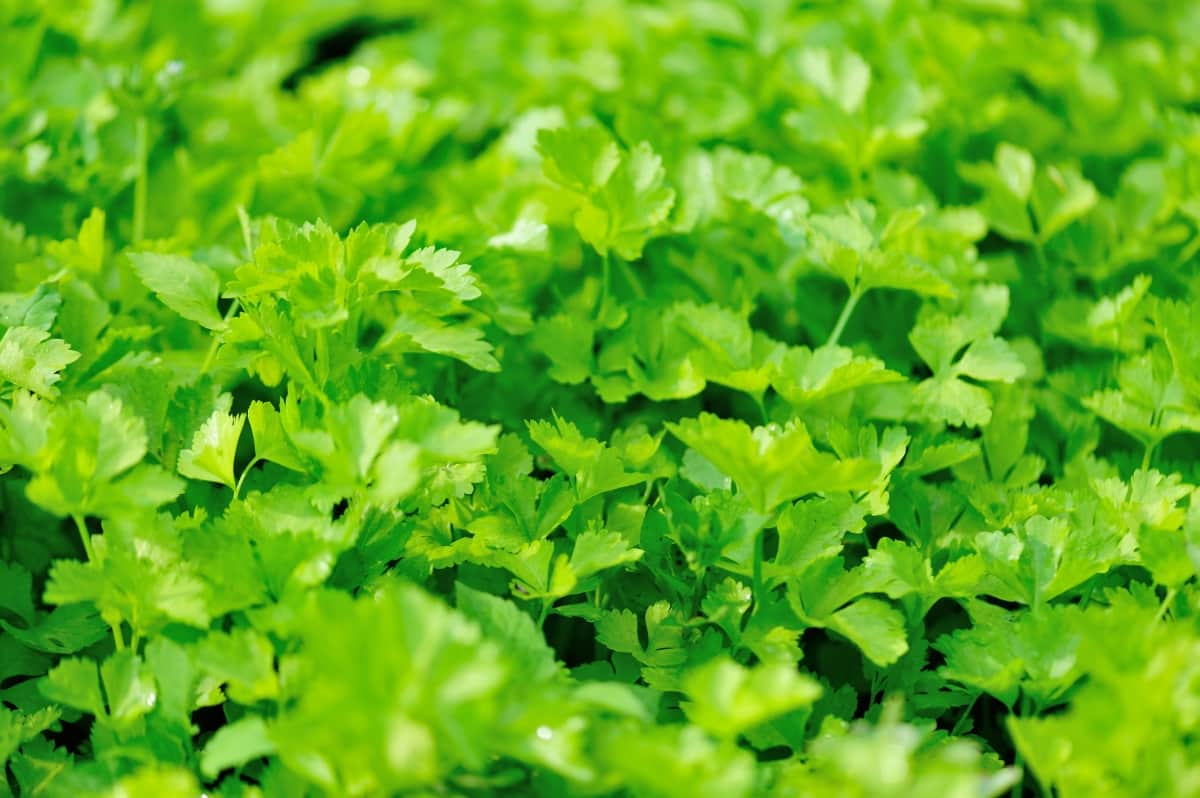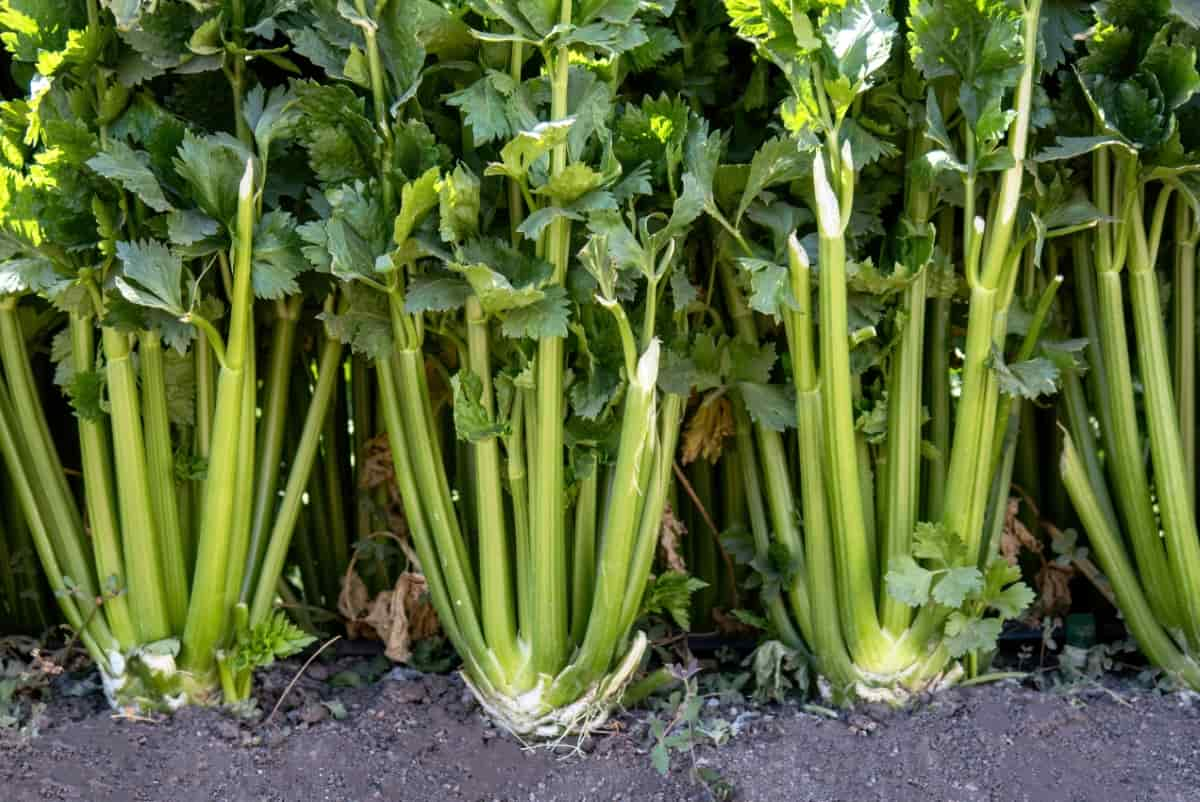This versatile vegetable belongs to the Apiaceae family and is known for its crunchy texture and distinct flavor. Celery is a crunchy and nutrient-packed vegetable that requires specific nutrients to thrive and produce a bountiful harvest. Understanding these requirements is essential for cultivating healthy and productive Celery in your garden.

When to Fertilize Celery Plants
Understanding the Nutritional Needs of Celery Plants for Optimal Growth
Celery plants, known for their crisp stalks and distinct flavor, have specific nutritional needs that must be met to ensure optimal growth. Nitrogen promotes leafy growth, while phosphorus supports strong root development, and potassium aids in overall plant health. Providing these nutrients in the right amounts will help your Celery plants thrive. In addition to macronutrients, micronutrients play a vital role in Celery fertilization. When choosing fertilizers for your Celery plants, you can choose organic or synthetic options.
Essential Macronutrients for Celery Fertilization: NPK
Like any other plant, Celery plants require essential macronutrients for optimal growth and productivity. These macronutrients are nitrogen (N), phosphorus (P), and potassium (K) – commonly referred to as NPK. Nitrogen is responsible for promoting vigorous foliage growth in Celery. Phosphorus supports strong root development and encourages flower formation and fruiting. Potassium is crucial for overall plant health, enhancing disease resistance and stress tolerance while aiding in water uptake.
The Role of Micronutrients in Celery Fertilization: Iron, Zinc, and Manganese
Micronutrients play a crucial role in Celery plants’ overall health and productivity. Iron is important for chlorophyll production in plants and aids in photosynthesis. Zinc is involved in various enzymatic reactions within plant cells and assists with hormone regulation. Manganese helps activate enzymes that promote healthy plant development.
It plays an important role in photosynthesis by helping to produce oxygen during this process. Insufficient manganese levels can lead to leaf discoloration or poor fruit set. Incorporating a balanced fertilizer specifically formulated for vegetable gardens can be beneficial to ensure an adequate supply of these micronutrients. Regular soil testing will help determine deficiencies and guide you toward the appropriate supplementation.
Organic Vs. Synthetic Fertilizers for Celery Plants
Organic fertilizers are the best fertilizer for Celery and are derived from natural sources such as compost, manure, and bone meal. They contain a wide range of nutrients slowly released into the soil, providing long-term benefits to your plants. One of the main advantages of organic Celery fertilizers is their ability to improve soil health and fertility over time. They promote microbial activity in the soil, which helps break down organic matter and release essential nutrients to plant roots.
On the other hand, synthetic or chemical fertilizers are manufactured using synthetic compounds that provide specific nutrients in concentrated forms. Plants can absorb these easily but have a faster release rate than organics. Synthetic fertilizers may offer quick results regarding plant growth and yield, but they also have potential drawbacks. Overuse or improper application can lead to nutrient imbalances in the soil and water pollution due to runoff.
Timing and Frequency of Fertilizer Application for Celery Plants
Providing the necessary nutrients at the right times throughout the growing season is important to maximize your yields. Before planting Celery, you’ll want to ensure the soil is properly prepared and enriched with fertilizer. This will help provide a strong foundation for your plants to thrive. Once your Celery plants are in the ground, you must continue fertilizing them throughout the growing season. When to Fertilize Celery? Fertilizing Celery with an organic fertilizer every two weeks will keep it healthy and productive.
The frequency of fertilization may vary depending on factors like soil fertility and weather conditions. If you observe any signs of yellowing leaves or stunted growth, increasing the frequency of fertilizer application rates for Celery may be necessary. By providing regular feedings throughout the growing season, you’ll ensure they have all the nutrients they need for optimal growth and maximum yields.
In case you missed it: Frequently Asked Questions About Growing Celery from Seed to Harvest

Soil pH and Celery Fertilization
Celery thrives in slightly acidic soil with a pH range between 6.0 and 7.0. This optimal pH level ensures the nutrients necessary for its growth are readily available. If your soil’s pH is too low or too high, it can hinder nutrient absorption by the Celery roots, leading to stunted growth and poor yields. To determine the soil pH requirements for Celery fertilization, use a simple soil testing kit available at gardening stores or send a sample to a laboratory for more accurate results.
Compost and Manure as Natural Fertilizers for Celery
Compost and manure are excellent natural Celery nutrient requirements. These organic materials provide a rich nutrient source that promotes healthy growth and development. When using compost as a fertilizer, it’s essential to ensure it is well-aged and fully decomposed. This allows the nutrients to be readily available for the Celery plant’s uptake. Manure can also be used as an effective fertilizer for Celery.
However, it should be aged or composted before application to avoid burning the plants due to high nitrogen content. Chicken manure is particularly beneficial due to its high nitrogen, phosphorus, and potassium levels. Both compost and manure improve soil structure by increasing its ability to retain moisture and enhance microbial activity. This creates an optimal environment for Celery roots to thrive and absorb nutrients efficiently.
Foliar Feeding: Supplementing Celery Nutrition Through Leaves
Foliar feeding Celery involves applying fertilizer directly to the plant leaves, allowing for efficient absorption. To create a foliar fertilizer solution for your Celery plants, dilute a water-soluble fertilizer according to the manufacturer’s instructions. Be sure to choose one specifically formulated for vegetables or leafy greens.
When applying foliar feedings, it’s important to do so during cooler parts of the day when evaporation rates are low. This allows more time for nutrient absorption without excessive loss due to heat or sunlight. Remember that foliar feeding should not replace regular soil-based fertilization. It should be used as a supplemental method to enhance nutrient uptake and address any potential deficiencies in your Celery plants.
Mulching Techniques to Improve Celery Fertilization Efficiency
Mulching is a valuable technique that can greatly improve the efficiency of Celery fertilization. Covering the soil around the Celery plants with organic material provides numerous benefits to your crop. Celery plants require consistent moisture levels to thrive and produce high-quality stalks. Adding a mulch layer can prevent water evaporation from the soil surface and reduce the need for frequent irrigation.
Furthermore, mulching suppresses weed growth by blocking sunlight and preventing them from germinating. Weeds compete with Celery for nutrients and resources; keeping them under control is essential for optimal plant growth. Moreover, organic mulches slowly break down over time and contribute to improving soil fertility. As they decompose, they release essential nutrients into the soil, which are then absorbed by the Celery roots.
Troubleshooting Common Nutrient Deficiencies in Celery Plants
Identifying and addressing these deficiencies early ensures optimal growth and a bountiful harvest. One common issue is nitrogen deficiency, which can manifest as pale or yellowing leaves. To remedy this, consider applying a balanced fertilizer with higher nitrogen content. Nutrient Imbalance and pH Imbalances are common Celery fertilizer problems.
Another nutrient deficiency to be aware of is phosphorus. Signs of phosphorus deficiency include slow growth and purplish discoloration on the leaves. Applying a fertilizer rich in phosphorus can help alleviate this problem. Potassium deficiency can also affect Celery plants, leading to weak stalks and increased disease susceptibility. Providing potassium-rich fertilizers will help rectify this issue.
In case you missed it: Hydroponic Celery Farming in a Greenhouse: Key Rules to Start from Scratch

In addition to macronutrients, micronutrient deficiencies can impact Celery plants too. Iron deficiency often manifests through yellowing between veins on new leaves, while zinc deficiency results in stunted growth and distorted foliage. Manganese deficiency causes interveinal chlorosis (yellowing) on older leaves. Supplementing with appropriate micronutrient fertilizers can combat these deficiencies effectively.
Conclusion
Celery plants typically reach around 12 to 18 inches when fully grown. Understanding the nutritional needs of Celery plants is crucial for their optimal growth and productivity. You can ensure your Celery plants thrive in your garden or farm by providing the right balance of macronutrients and micronutrients.
- Feed Your Flock for Less: Top 10 Tips to Save on Chicken Feed
- Ultimate Guide to Ossabaw Island Hog: Breeding, Raising, Diet, and Care
- Hatching Answers: The Top 10 Reasons Your Chickens Aren’t Laying Eggs
- Eggs and Economics: Breaking Down the Cost of Raising Backyard Chickens
- Defend Your Greens: Proven Methods to Keep Iguanas Out of Your Garden
- Ultimate Guide to Cinnamon Queen Chicken: A Comprehensive Guide for Beginners
- Ultimate Guide to California Tan Chicken: Breeding, Raising, Diet, Egg-Production and Care
- Ultimate Guide to Marsh Daisy Chicken: Breeding, Raising, Diet, and Care
- 10 Types of Chicken Farming Businesses You Can Start for Profits